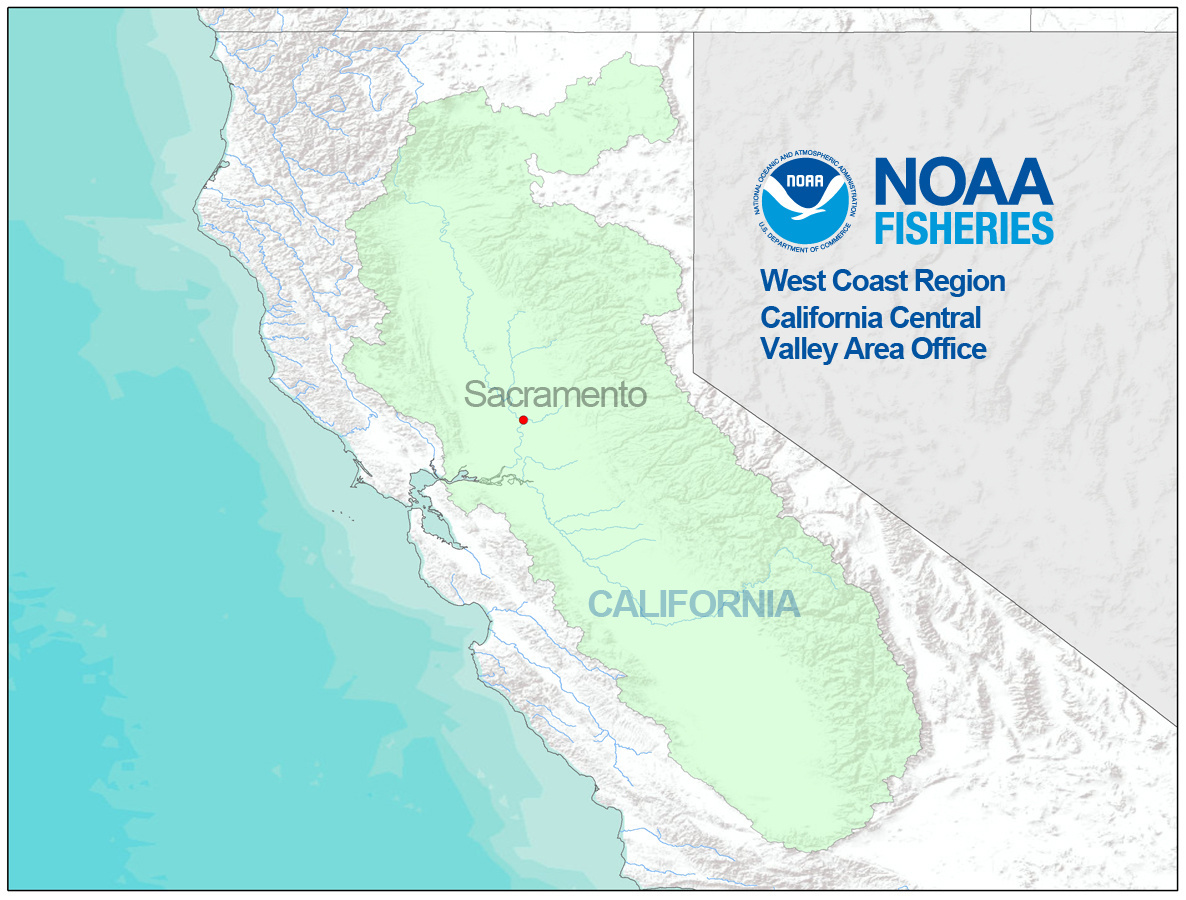West Coast Area Offices
California Coastal, California Central Valley, Interior Columbia Basin, Oregon and Washington Coastal Area Offices.
The West Coast Region (WCR) includes four Area Offices - the California Coastal, California Central Valley, Interior Columbia Basin, and Oregon and Washington Coastal Area Offices. These four Area Offices advance the WCR’s mission by conserving anadromous fish, their habitats, and the ecosystems on which they depend. They are also responsible for marine habitat conservation along the West Coast.
Specifically, our Area Offices:
- Implement Endangered Species Act (ESA) Sections 4, 7, and 10; Magnuson Stevens Act (MSA) essential fish habitat (EFH) provisions, the Federal Power Act (FPA), and Fish and Wildlife Coordination Act (FWCA) in their geographic areas;
- Consult with Federal, tribal, and state agencies that authorize, fund, or undertake actions that may adversely affect ESA-listed species or EFH;
- Consult on projects to improve fish passage, and provide technical assistance to states, tribes, and others seeking to improve habitat conditions for managed and ESA-listed species;
- Develop and implement salmon, steelhead, and green sturgeon recovery plans, with a particular focus on habitat; and
- Develop science-based strategies and effective partnerships to recover and conserve West Coast trust resources.
- Work on interagency review teams with mitigation/conservation bankers on establishing high quality mitigation in the West Coast Region.
California Coastal Office

The California Coastal Office includes four offices located in Yreka, Arcata, Santa Rosa, and Long Beach. Our responsibilities focus on protecting species and their habitats along the California coastline and its associated watersheds, including the entire Klamath River Basin. We work to protect species listed under Endangered Species Act by evaluating the impacts of proposed federal actions, developing and implementing recovery plans, ensuring safe fish passage through federal and some private dams and seeking conservation partnerships with local governments and landowners. Using local, on-the-ground knowledge, our priorities focus on land use practices and other threats that limit particular recovery and restoration activities. We work with local communities and a diverse group of stakeholders to ensure that mutually beneficial conservation strategies are realized.
California Central Valley Office

The California Central Valley Office is located in the heart of California’s Central Valley, only a few blocks from the State Capitol. Our responsibilities focus on the Sacramento and San Joaquin River Basins and Sacramento-San Joaquin Delta. We work in these river basins to protect species listed under the Endangered Species Act by evaluating the impact of proposed federal actions, developing and implementing recovery plans, seeking conservation partnerships with local governments and landowners, and ensuring safe fish passage past federal and some private dams.
Learn more about the West Coast Region’s California Central Valley Office
Interior Columbia Basin Office

The Interior Columbia Basin Office is located in Portland, Oregon, with satellite teams in Ellensburg, Washington; La Grande, Oregon; and Moscow, Boise, and Salmon, Idaho. Our responsibilities focus on protecting species and their habitats upstream of Bonneville Dam, into the upper reaches of the Columbia and Snake rivers in Washington, Oregon, and Idaho. We work to protect species listed under the Endangered Species Act by evaluating the impacts of proposed federal actions, developing and implementing recovery plans, seeking conservation partnerships with local governments and landowners, and ensuring safe fish passage through federal and some private dams.
Oregon and Washington Coastal Office

The Oregon and Washington Coastal Office is located in Portland, Oregon, and Seattle, Washington, with satellite teams in Lacey, Washington; and Roseburg, Oregon. Our responsibilities focus on protecting species and their habitats along Washington and Oregon coasts, including Puget Sound and the lower Columbia and Willamette rivers. We work to protect species listed under the Endangered Species Act by evaluating the impacts of proposed federal actions, developing and implementing recovery plans, seeking conservation partnerships with local governments and landowners, and ensuring safe fish passage through federal and some private dams.